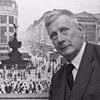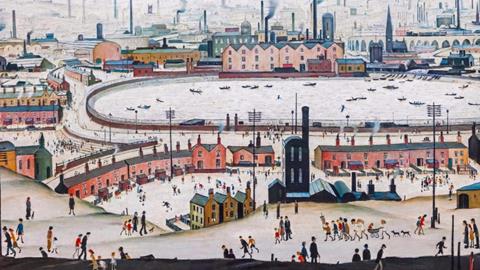Artist / Painter
Channels and Networks

Artist LS Lowry is famous for painting scenes of life in the industrial districts of the North West of England in the mid-20th century.
Mention the name L.S. Lowry to anyone in Britain and a certain urban landscape will be evoked: factory walls, belching chimneys, looming mills, the streets below teeming with figures, invariably described as matchstick, moving with a kind of tidal drift towards, or away from, mill gateways, mines, football matches, political meetings. It’s a vision of Britain that older people know beneath the skin from the time when the country’s grimy, productive industrial North was simply a fact of life, even if they never went to look at it. And it’s a vision every child knows because Lowry’s art is now taught in schools as a means to understanding a Britain that now barely exists.
I saw the industrial scene and I was affected by it. I tried to paint it all the time. I tried to paint the industrial scene as best I could. It wasn’t easy.
Born in 1887, the son of a clerk, Laurence Stephen Lowry grew up in leafy and relatively prosperous Rusholme, a few miles away on the other side of Manchester.
If people call me a Sunday painter I'm a Sunday painter who paints every day of the week!
In 1909, when he was 21 and still very much living at home, the family, under financial pressure, moved to Pendlebury.
At first I hated it, then, after years, I got pretty interested in it, then obsessed by it.
On leaving school without qualifications, Lowry took a menial job with a firm of accountants, but soon began evening classes in drawing. He went on to study part-time, in Manchester and Salford, over a period of 23 years.
I am a simple man and I use simple materials: Ivory Black, Vermilion, Prussian Blue, Yellow Ochre, Flake White and no medium. That’s all I’ve ever used in my paintings.
In 1916, by which time he was working as a rent collector for the Pall Mall Property Company, he had an experience which was to crystallise his approach to painting.
One day I missed a train from Pendlebury, a place I had ignored for seven years, and as I left the station I saw the Acme Spinning Mill: the huge black framework of rows of yellow-lit windows standing out against the sad, damp charged afternoon sky. The mill was turning out. I watched this scene, which I’d looked at many times without seeing it, with rapture.
Lowry died in 1976, a wealthy man, now living in the affluent suburb of Mottram, on the edge of the Peak District, where he was able to indulge his passion for collecting: his bed surrounded by exotic, sensual paintings of women by his favourite artist, Dante Gabriel Rossetti.
You cannot teach painting because everyone's colour sense is different.
But drawing... you either get it right or wrong.
To learn more about LS Lowry click and explore any of his media channels and network links in the tool-bar above.



